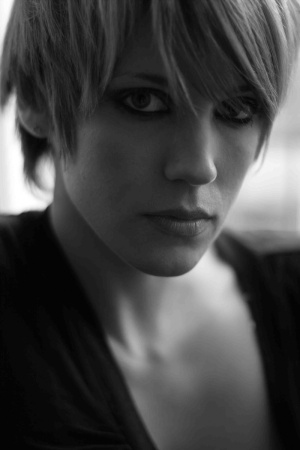Last year, I crowd-funded my attendance to ScienceOnline2012, an un-conference for people communicating about– and doing– science on the internet. In exchange, I offered to interview one attendee for every $100 I raised. In the lead-up to ScienceOnline2013, I’ll be sharing those interviews. Based on feedback from Twitter, I decided to interview student attendees in the sciences.
My fifth interviewee, Heidi K. Smith, just completed her PhD in Biological Sciences in the Hobart Lab at Columbia University (congrats!). She tweets as @HeidiKayDeidi and runs a beautiful biodiversity blog at Nature Afield.
 1) What advice do you have for first-time attendees of ScienceOnline2013?
1) What advice do you have for first-time attendees of ScienceOnline2013?
Be open to everything. Come ready to share your ideas, but listen and let yourself be inspired.
2) As a scientist with a clear love of biodiversity, what do you see as some of the biggest barriers to conservation efforts?
I think funding is one of the biggest barriers to conservation research.
3) Your blog, Nature Afield, is subtitled “notes on biophilia,” an E. O. Wilson reference. Can you tell me a little about the concept of biophilia, and how that relates to your work as a scientist?
I believe that everyone is born with a strong connection to nature. As some people get older they forget that connection. Nature is what inspires me and drives me as a scientist. I like to bring back some of that feeling of wonder to everyone.
4) Who are your mentors? What science writers or researchers do you look up to?
Niko Tinbergen is a hero of mine. He couldn’t be anything else in life besides a biologist. I like Ed Wilson because he is phenomenal at communicating his enthusiasm and ideas. At the same time, he is a truly gifted scientist.
5) What has been your experience as a woman in science? Do you have any advice for young girls interested in careers in science?
My Mom is a nurse and a strong female role model. I grew up thinking I could be whatever I wanted. Until I started my PhD at Columbia I don’t think I realized there was a bias at all in science. I had a fantastic female lecturer who happened to be teaching a class of all girls. She reminded us that women are often judged more harshly so it is our duty to be over prepared.
Women in science run the gamut of personality types. Little girls should know that you can be a girly girl with a pink sparkly microscope or a tom boy that dissects frogs, but you should do what you love. It is curiosity and tenacity that female scientists have in common not fashion or feminist views.
6) What’s the twitter-version of your PhD research?
My PhD research was setting out to understand the genes and molecules involved in salt chemotaxis in the nematode, C. elegans
7) What’s one stereotype of scientists that you’d like to correct?
I would like people to understand the value of basic research. The public is so focused on disease-based research and I would like them to see that we know very little in some cases about elementary physiological processes.
8) What’s the coolest experience you’ve had in the field?
I wrote this project on a grossly understudied family of aquatic salamanders and contacted several scientists with relevant previous publications The herpetologists that I contacted were extremely helpful and I was overwhelmed by the outpouring of support. One individual in particular, Paul Moler invited me down to Florida to go out and catch some of these salamanders. I had read several of his papers and had been working on this proposal for quite some time and all of a sudden I was wading through chest high water with this incredible biologist catching them.
Categories: Academia Conferences Grad School Women in Science
Leave a comment